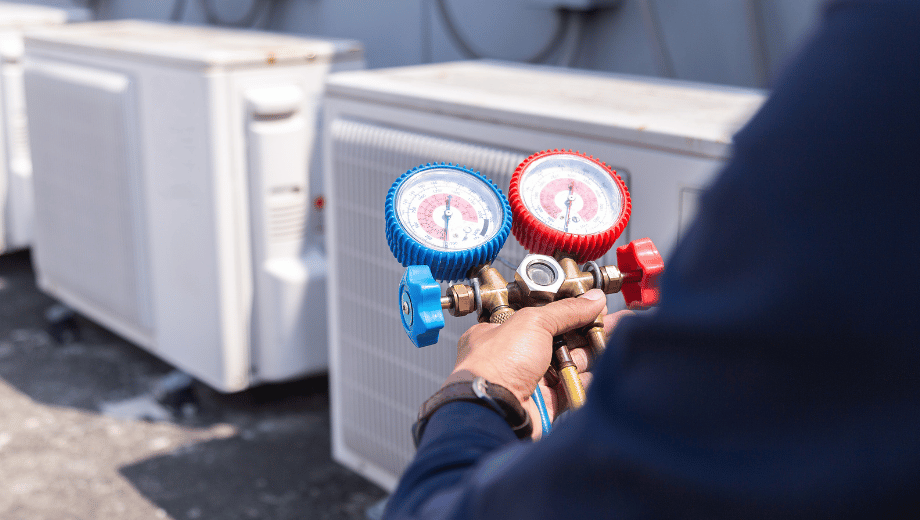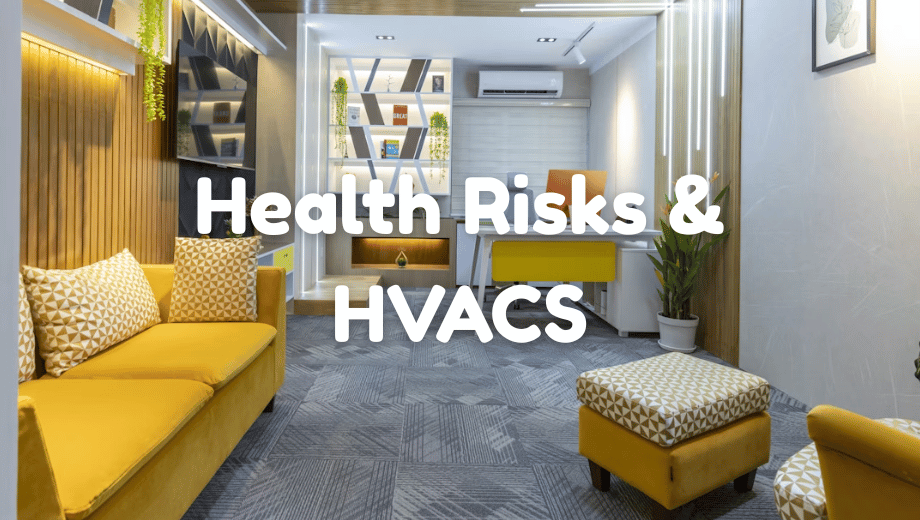A reliable HVAC system supports comfort, indoor air quality, and overall health in residential and commercial spaces. When these systems develop faults, the impact extends far beyond temperature regulation. Malfunctioning units can contribute to respiratory problems, spread contaminants, and increase exposure to harmful substances. Understanding these risks helps property owners take proactive steps to protect their health and maintain safer living and working environments.
Compromised Air Quality and Respiratory Health
HVAC systems play a central role in circulating air throughout buildings. Faulty units may fail to filter out dust, allergens, and pollutants effectively. As a result, indoor air becomes laden with particles that irritate the respiratory system. People with allergies, asthma, or pre-existing lung conditions face heightened sensitivity to poor air quality.
Leaks or blockages in ducts can draw in dust and debris from attics, crawl spaces, or other unconditioned areas. Contaminated air then spreads throughout the building, exposing occupants to allergens that inflame nasal passages and airways. With time, this exposure leads to persistent coughing, sneezing, congestion, and reduced lung function.
Mold and Bacterial Growth
Moisture buildup within HVAC systems creates ideal conditions for mold and bacteria to thrive. When units fail to drain properly or operate with poor airflow, condensation collects in ducts, evaporator coils, and drip pans. These damp areas become breeding grounds for microbial growth.
Mold spores released into the air can trigger allergic reactions, respiratory distress, or chronic sinus issues. Bacterial contamination poses an additional risk, particularly in spaces with vulnerable individuals such as children or the elderly. According to the people behind Rolls Mechanical, regular inspections and timely repairs from professionals protect indoor environments from these hidden dangers. Maintaining clean, dry HVAC components prevents contaminants from circulating.
Each step toward better moisture control directly improves air safety and protects those who occupy the space daily.
Increased Carbon Monoxide Exposure
Faulty heating components in HVAC systems raise the risk of carbon monoxide (CO) leaks. Cracked heat exchangers or malfunctioning burners can allow CO to enter indoor spaces without detection. This colorless, odorless gas can cause headaches, dizziness, nausea, and, in severe cases, life-threatening poisoning.
Regular maintenance, including inspections of combustion chambers and flue systems, detects these problems before they escalate. Installing carbon monoxide detectors adds another layer of protection. Households that rely on older heating systems should remain very vigilant, as wear and tear increases the likelihood of dangerous leaks.
Aggravated Allergy and Asthma Symptoms
People with allergies or asthma often experience worsened symptoms in buildings with malfunctioning HVAC systems. Filters clogged with dust and pollen no longer trap allergens effectively. Unregulated humidity encourages the presence of dust mites, another common trigger for respiratory irritation.
When air circulates through dirty ducts or around poorly maintained components, allergens spread into every corner of the space. This continuous exposure contributes to chronic flare-ups, fatigue, and reduced quality of life for sensitive individuals. Replacing filters regularly, keeping ducts clean, and ensuring balanced humidity levels help reduce these health impacts significantly.
Spread of Airborne Contaminants
Modern HVAC systems often include ventilation functions that exchange indoor and outdoor air. Faulty systems may allow outdoor pollutants, chemical vapors, or exhaust fumes to enter buildings unchecked. At the same time, internal issues such as dirty coils or blocked vents can trap contaminants indoors.
Poor ventilation encourages stagnant air, which concentrates pollutants and makes indoor environments feel stuffy. This creates health challenges ranging from headaches and eye irritation to more serious long-term effects when people spend extended periods in polluted spaces.
Skin and Eye Irritation
Air quality issues caused by HVAC faults extend beyond respiratory problems. Pollutants and unbalanced humidity levels can cause dryness, skin irritation, and eye discomfort. Dry air often develops when systems malfunction during winter heating seasons, pulling moisture from indoor spaces.
Prolonged exposure to these conditions leads to itchy skin, chapped lips, and increased sensitivity around the eyes. Balancing humidity and maintaining clean air circulation reduces these issues and improves overall comfort.

Fatigue and Concentration Issues
Poor indoor air quality impacts more than physical health. Faulty HVAC systems that circulate pollutants or fail to regulate temperature contribute to fatigue, headaches, and reduced concentration. People who spend long hours in these environments may experience brain fog or decreased productivity without realizing the HVAC system plays a role.
Regular inspections and timely maintenance keep systems operating efficiently, supporting better oxygen flow and cleaner air. Improved air quality boosts focus, mental clarity, and overall well-being for everyone in the space.
Long-Term Structural and Health Effects
Unchecked HVAC problems affect both building structures and human health. Moisture accumulation from leaks or malfunctioning components can damage walls, ceilings, and insulation, creating hidden pockets of mold. Prolonged exposure to these contaminants increases the likelihood of chronic respiratory conditions or skin disorders.
The costs associated with delayed maintenance often exceed those of regular inspections and repairs. Investing in proper system care protects both property and health, creating safer environments for families, employees, and visitors.
Faulty HVAC systems pose serious health risks that extend beyond temperature discomfort. Compromised air quality, mold growth, carbon monoxide exposure, and increased allergens create conditions that impact respiratory health, skin, eyes, and cognitive function. Regular maintenance, prompt repairs, and professional inspections ensure HVAC systems continue to support healthy environments.
Property owners who address issues early protect both their investment and the well-being of everyone who enters their spaces. Proactive care turns HVAC systems into reliable guardians of indoor comfort and safety rather than sources of hidden danger.




